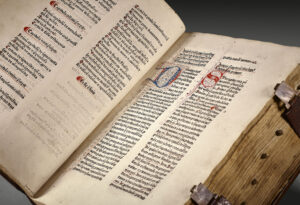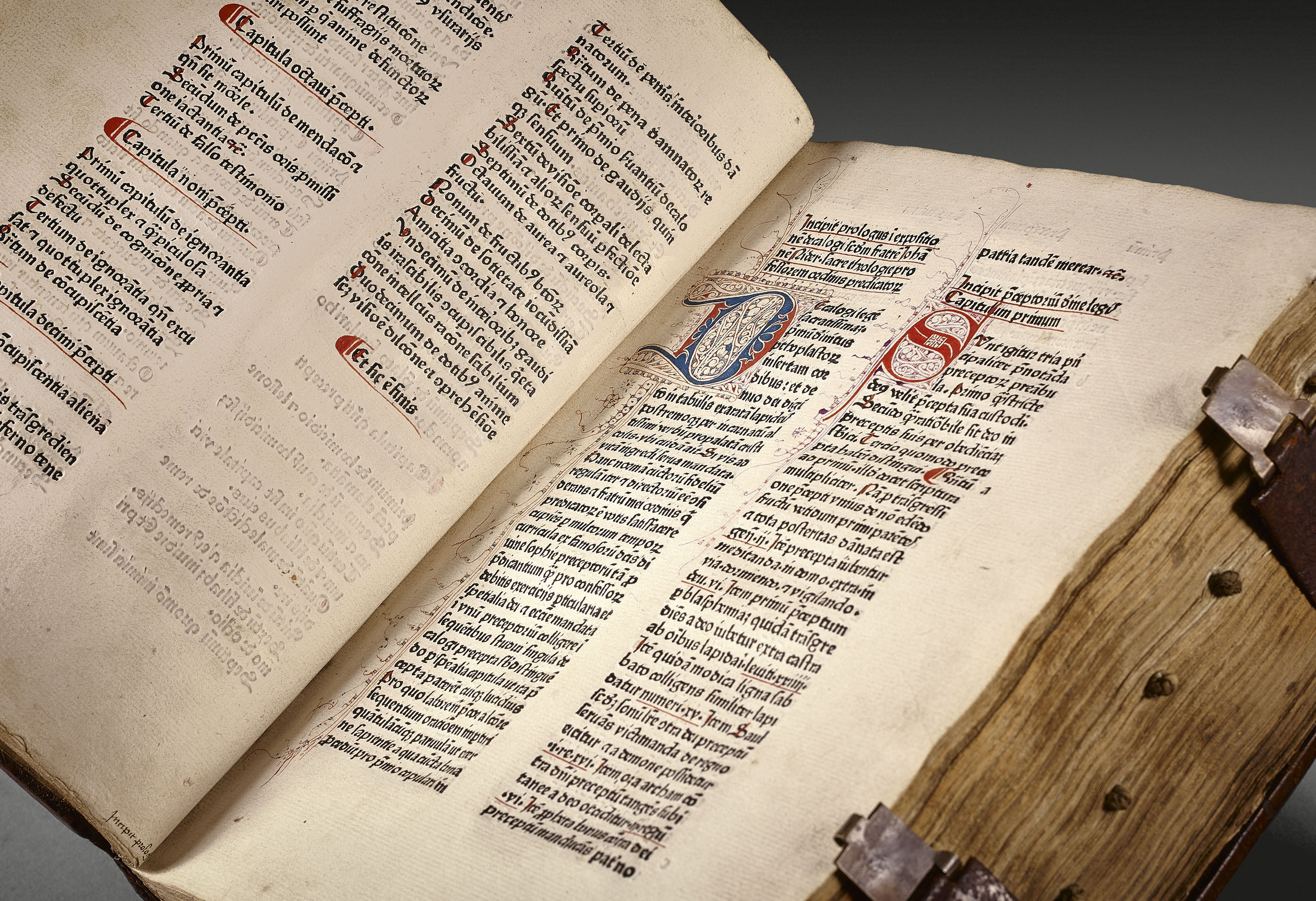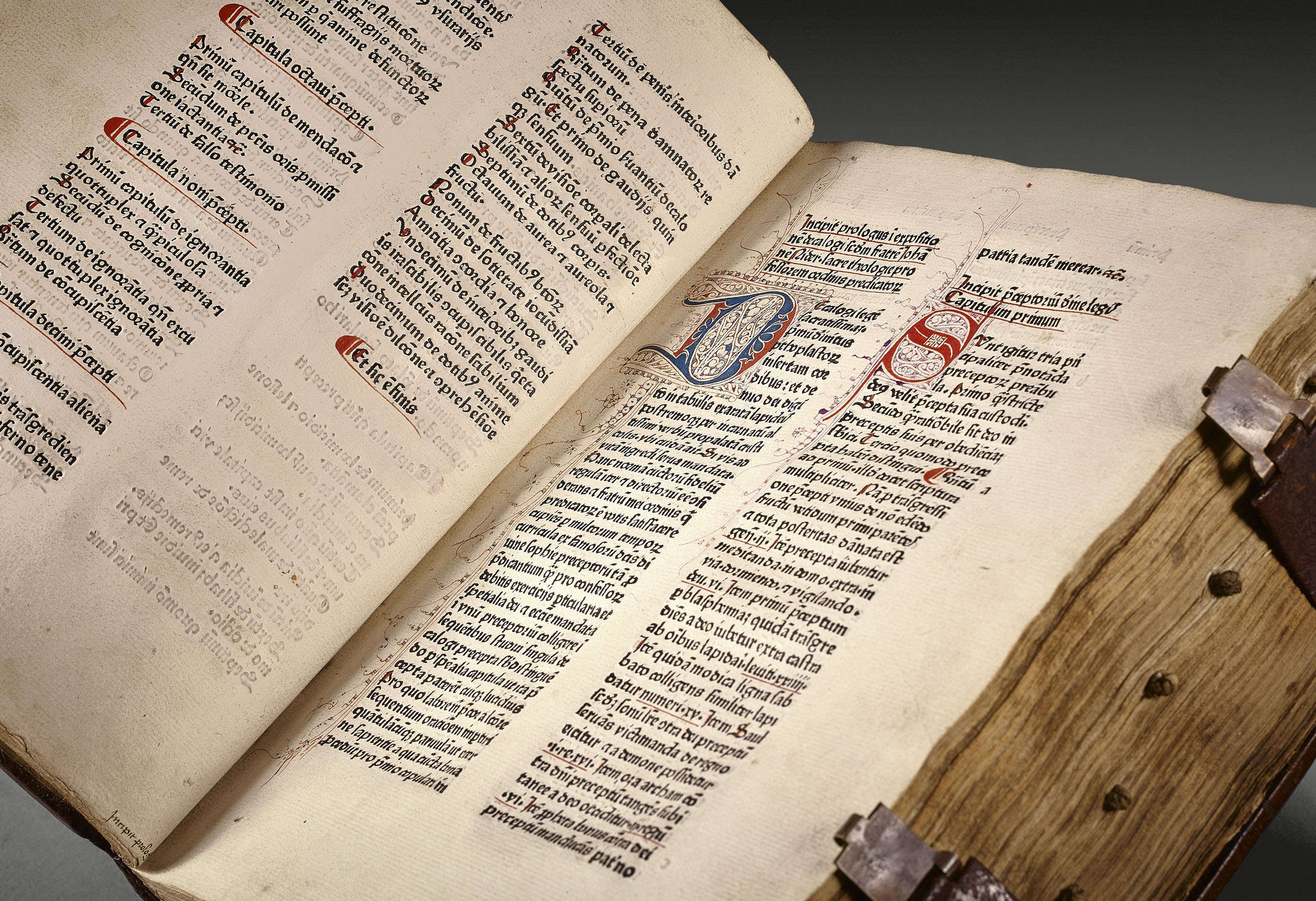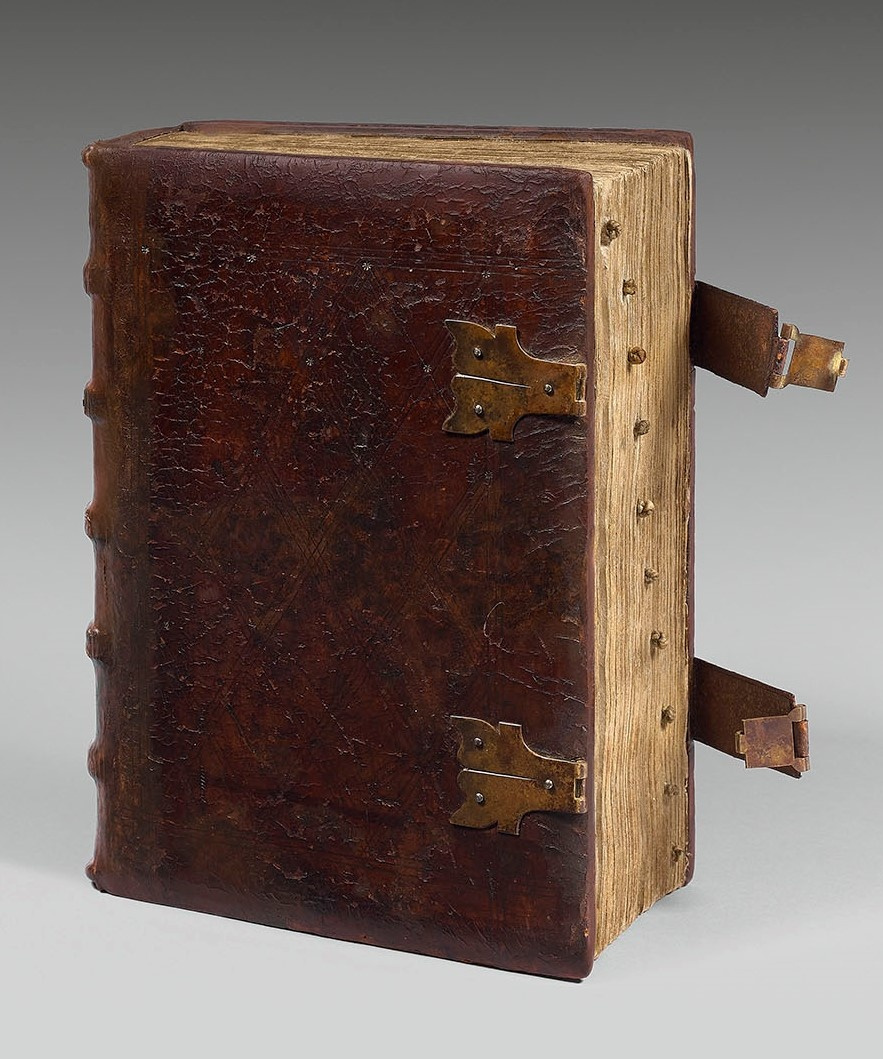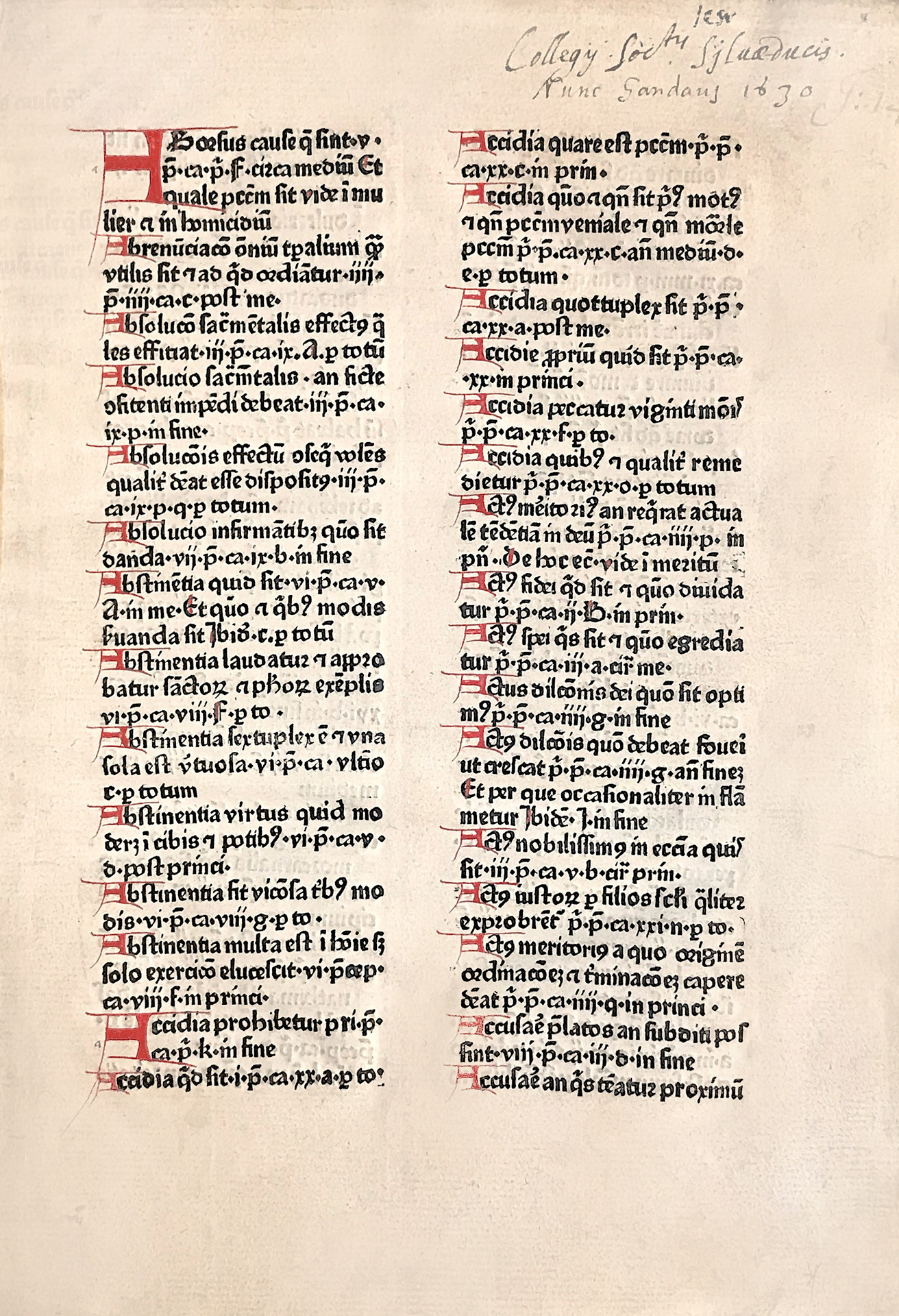[Cologne, Ulrich Zell, n.d. (not after 1472)].
Ia (Table) : [A] Borsus cause q sint. v. … 29a. Incipit prologus ī expositionē decalogi scŏm fratrē Iohānē Nider. sacre theologie professorem ordinis predicatoч. 329a Colophon : Explicit preceptoriū diuine legis frīs Iohānis. Nyder sacre theologie professoris eximij ordinis predicatoч. conuentualis Nurēbergensis.
Folio [*10, a10, b8, c-p10, q12, r-y10, A-K10] (330) ll., the last one blank. Gothic characters. Type 2-BMC 115. 2 columns. 37 lines. Small tear in the upper margin of l. 27, not touching the text, waterstain in the upper margin of l. 212 until the end and in the margin of the last 30 ll.
Full brown calf, covers decorated with triple blind-stamped fillet with a diamond shaped decoration, leather and brass ties and clasps preserved, spine ribbed preserved (very rare) with tiny restorations, vellum skin endleaves. Very well preserved contemporary binding.
297 x 215 mm.
Third edition, complete with the last blank leaf, the first one printed in Cologne by Ulrich Zell.
The publication date of this collection of commentaries on the Ten Commandments remains unknown. We know that it was not published after 1472 thanks to a copy preserved at the Bibliotheque Nationale de France which bears a rubric date of August 20, 1472.
This very beautiful copy is decorated with 11 splendid ornamental capital letters painted and ornamented with red, blue and purple colors, with filiform extensions. The work is entirely rubricated (with a very beautiful calligraphy).
We will find, protruding the margins, ten tabs or small leather knots fixed under paper to mark important passages of the text and facilitate their access. Professor in Vienna, Jean Nider (1380 1438) distinguished himself as a preacher and ardent inquisitor. In 1431 he was called as representative to the general council of Constance, then of Basel.Jean Nider then stands out for his commitment to the reform of the Dominican convents. He thus became prior of Nuremberg and then of Basel. Through his writings, he participated in the anti-Hussite controversy, and he was delegated to several embassies of the Council of Basel to the heretics of Bohemia, in 1431-1432 and then in 1434.He remained famous in the annals of the cruelty exercised in Bohemia against the Hussites. Having failed during a first mission to bring the disciples of John Huss back to the right path, he became one of the leaders of the terrible crusade which put Bohemia to fire and blood and which replaced the means of persuasion by pyres.
Author of several works, one of the most famous remains the Formicarius. It is one of the founding texts of Renaissance demonology that was used extensively by Nider’s successors like Del Rio for his famous Malleus Maleficarum. For the drafting of this volume, Jean Nider brings together various testimonies such as those of the lord of Blankenburg, Peter Van Greyerz, inquisitor judge of Evian and reformer of the convent of Lyon, who had presided over courts where trials were judged in witchcraft. Nider wrote that witches cooked and then ate children, including their own, summoned demons, smeared the True Cross, and made potions with the murdered children.
On a crusade against vice.
“In this book of commentaries on the ten commandments,” Praeceptorium divinae legis, sive Exposition Decalogi “, the sixth is the one that we have the greatest pleasure to transgress since it is precisely pleasure, voluptuousness, sex and the gluttony that it claims to regulate. In the wide range of lust, our Dominican particularly castigates all the pleasures of “feast”. He lengthily details the sins of greediness, gluttony, drunkenness” (Oberlé).
He cites as an example the Saracens who never drink wine, claims that Charlemagne only drank wine three times a month, and relates an anecdote about one of the ancient Louis, king of France, who had a precious cup inside of which he had engraved a sign. His cupbearer was not to pour wine that exceeded this mark above which he supplemented with water. Wine is responsible for all other sins because it induces lust, blasphemy, and anger. It makes people talk nonsense, darkens the brains and drives man away from God.Nider is very angry with our “Bacchus of the Old Testament”, the kind Father Noah who, on Mount Ararat, barely disembarking from the ark, discovered the vineyard, made wine and got drunk in his tent. Four entire chapters are devoted to gluttony, fasting and abstinence. This text is famous in the history of European bibliophily because Brunet reminds us that the edition printed in Cologne in 1472 by Joh. Koelhof de Lubick is “the oldest known book printed with signatures”. Michaud repeats this assertion:
“Praeceptorium, seu De decem praeceptis tractatus, Cologne, 1472, in-folio.
Very sought-after edition, because it is the oldest dated book that has signatures.”
Specificities of the copy:
Rare fact: The copy is complete with its 330 leaves: (copies consulted only have 329 leaves, including the 4 copies of the British Museum).
Very wide-margined copy: 297 x 215 mm compared to 281 x 202 mm ; 287 x 205 mm ; 289 x 215 mm et 293 x 213 mm for the four other copies of the British Museum.
The copy is preserved in its contemporary binding with its spine preserved that was only thinly restored. this book printed more than 543 years, many times read and looked, very rarely kept its very thick original spine.
Another rare fact, all of the ten knots or small leather bows, protruding from margins and fixed under paper to indicate important passages in the text and to facilitate their access are preserved.
Precious and beautiful copy preserved in its contemporary binding. The paper, very thick and of very good quality, is of a brilliant white.
Hain-Copinger, 11780 ; Pellechet, 8534 ; Polain, 2869 ; Biblioth. Polonaises, 3985; BM Cat., I, 194; Cat. Incun. B.n.F., II N-124; Oberlé, 1012 ; Voullième 856.
